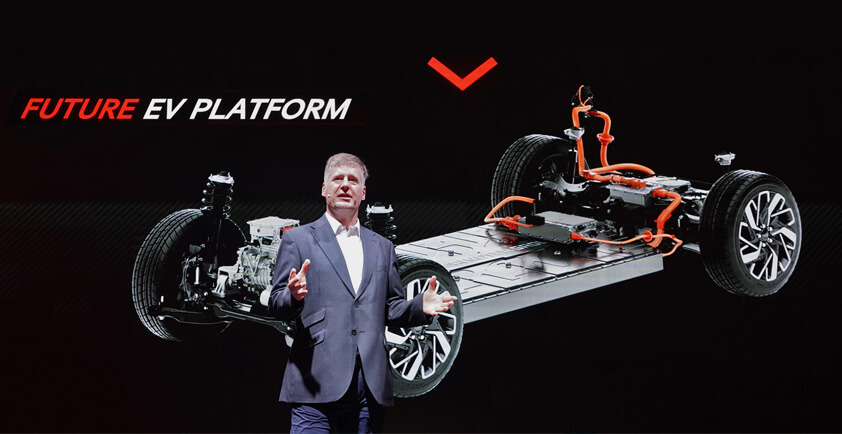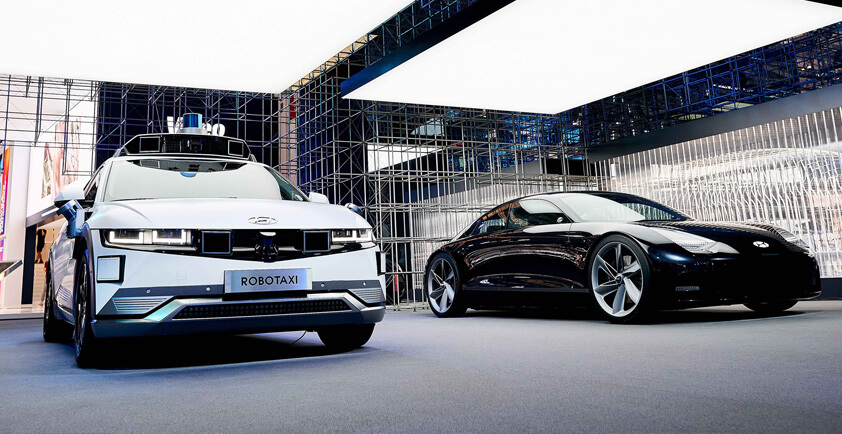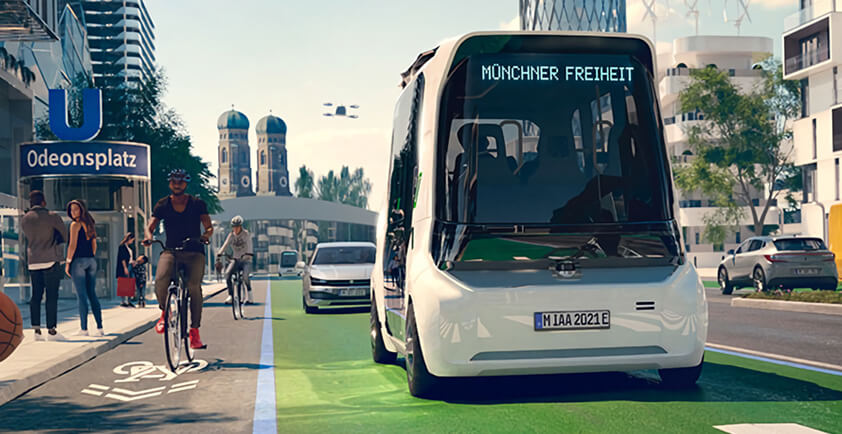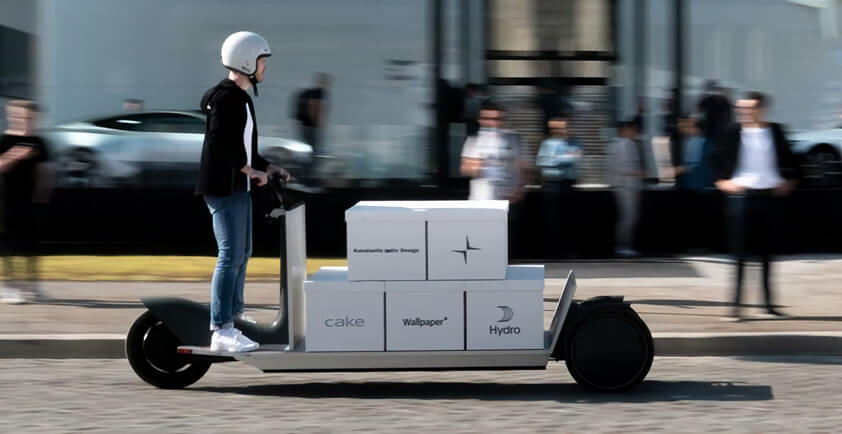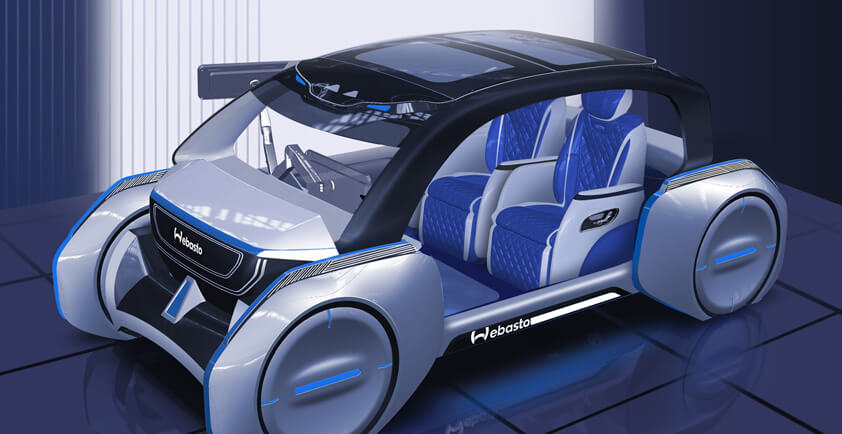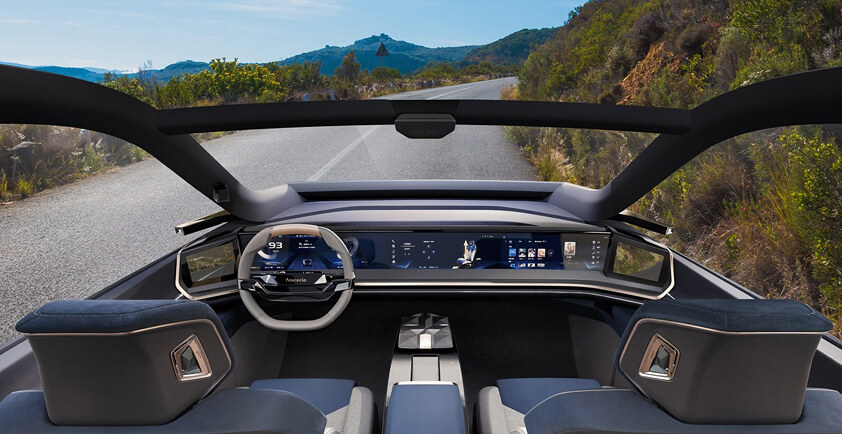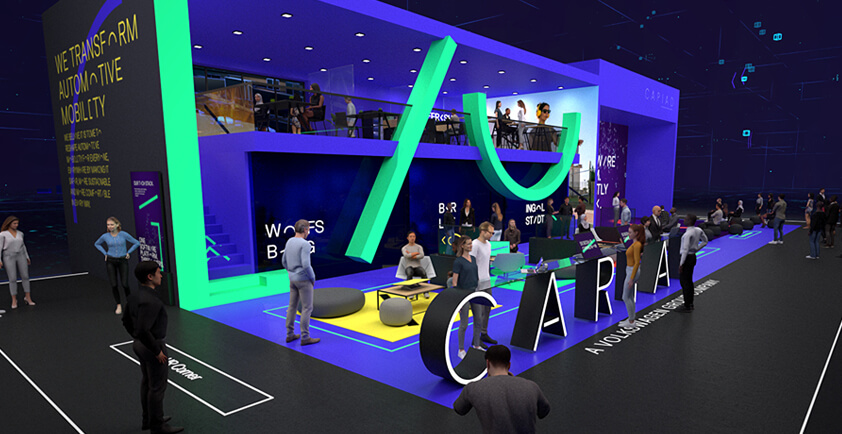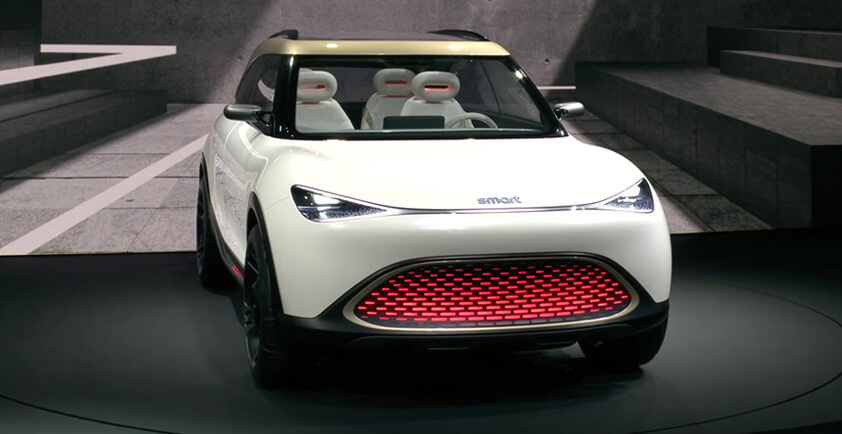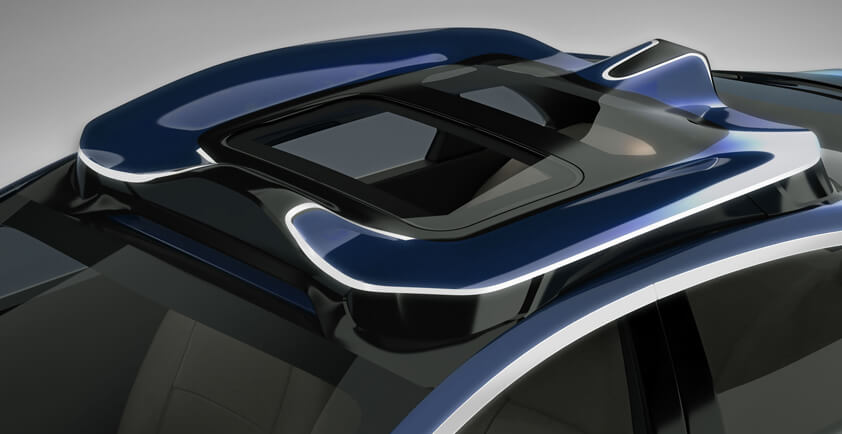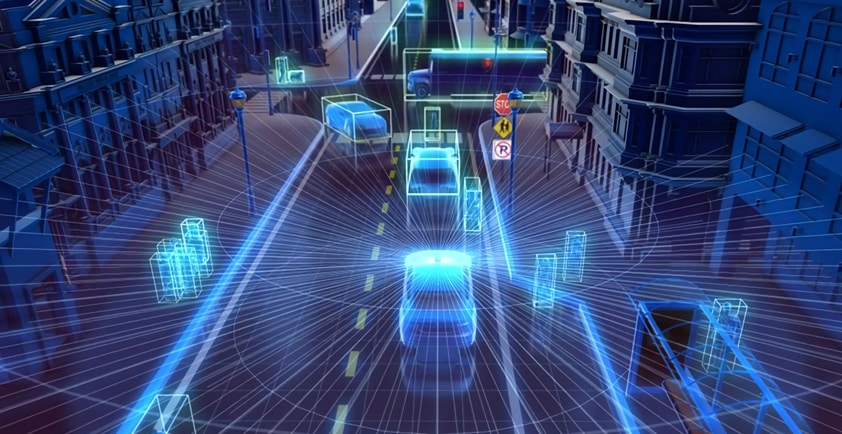

DLR AT IAA MOBILITY 2021
>> DLR is presenting the two vehicle prototypes, U-Shift and SLRV, at the Open Space of the IAA Mobility 2021.
>> On-the-road modularisation is the fundamental idea behind U-Shift. It consists of a U-shaped drive unit and capsule-shaped structures for transporting people and goods.
>> The SLRV is an extremely light and, thanks to its sandwich structure, very safe commuter vehicle with a fuel cell propulsion system.
>> At the IAA Summit, the focus is on the projects ‘Lower Saxony Test Field for automated driving’ and ‘surveying mobility behaviour via smartphone with the DLR MovingLab’.
>> Focus: Transport, intelligent mobility, digitalisation, hydrogen
At the IAA Mobility 2021 in Munich, the German Aerospace Center (Deutsches Zentrum für Luft- und Raumfahrt DLR) is showing how climate protection and mobility in road transport can be reconciled. The spotlight will be on two futuristic prototypes: the Safe Light Regional Vehicle (SLRV) and U-Shift. The SLRV is an extremely light yet very safe 'hydrogen-powered runabout'. U-Shift demonstrates urban mobility and logistics in a new way, while also separating the U-shaped drive unit from the capsule-shaped superstructures tailored to the specific transport task. From 7—12 September, visitors to the trade fair will have the opportunity to see these two vehicles at the DLR stand (OP440) at the Open Space on Odeonsplatz in central Munich.
DLR will also be present at the IAA Summit in the exhibition halls (Hall A2, Stand C50) to give an insight into how research and industry are jointly testing automated and networked driving at the Lower Saxony Test Field. We will also show how mobility behaviour can be measured easily with a smartphone using the example of the DLR MovingLab.
"Mobility is, and is set to remain, an integral part of our global world," says Anke Kaysser-Pyzalla, Chair of the DLR Executive Board. "We want to continue to be mobile in the future – but even safer and more comfortable, while avoiding emissions and saving resources. As one of the largest transport research institutions in Europe, DLR is actively shaping this transformation process by keeping people's wishes in mind and looking at both the energy and transport systems. Together with partners from science and industry, we are developing solutions that are intelligent and networked."
The zero-emissions SLRV commuter vehicle – lightweight and extremely safe
The SLRV is a special small vehicle with an alternative drive concept. This sporty hydrogen-powered runabout It is extremely light yet very safe thanks to its metallic sandwich structure, which weighs only around 90 kilograms. The material used comprises a metal top layer and a plastic foam interior. The front and rear sections of the SLRV are made of sandwich panels and serve as crumple zones. The passenger space consists of a shell topped with a ring structure that absorbs the forces that act on the car while driving and protects the occupants during a collision. This innovative lightweight concept is combined with a highly efficient fuel cell propulsion system for safe, resource-efficient mobility that could prove particularly beneficial for commuters. Its range is approximately 400 kilometres and can reach a maximum speed of 120 kilometres per hour.
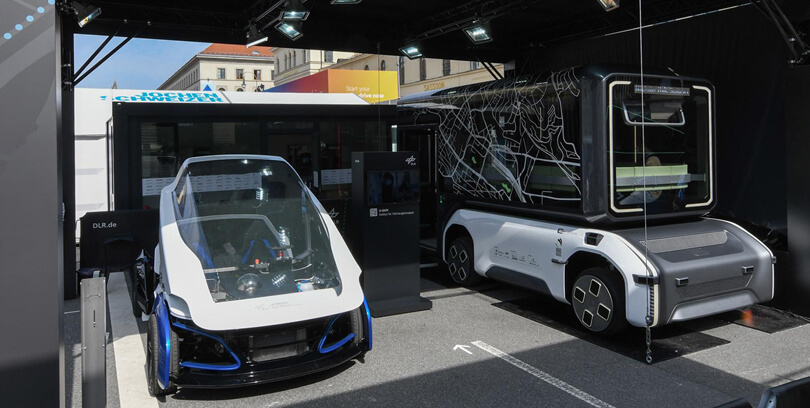
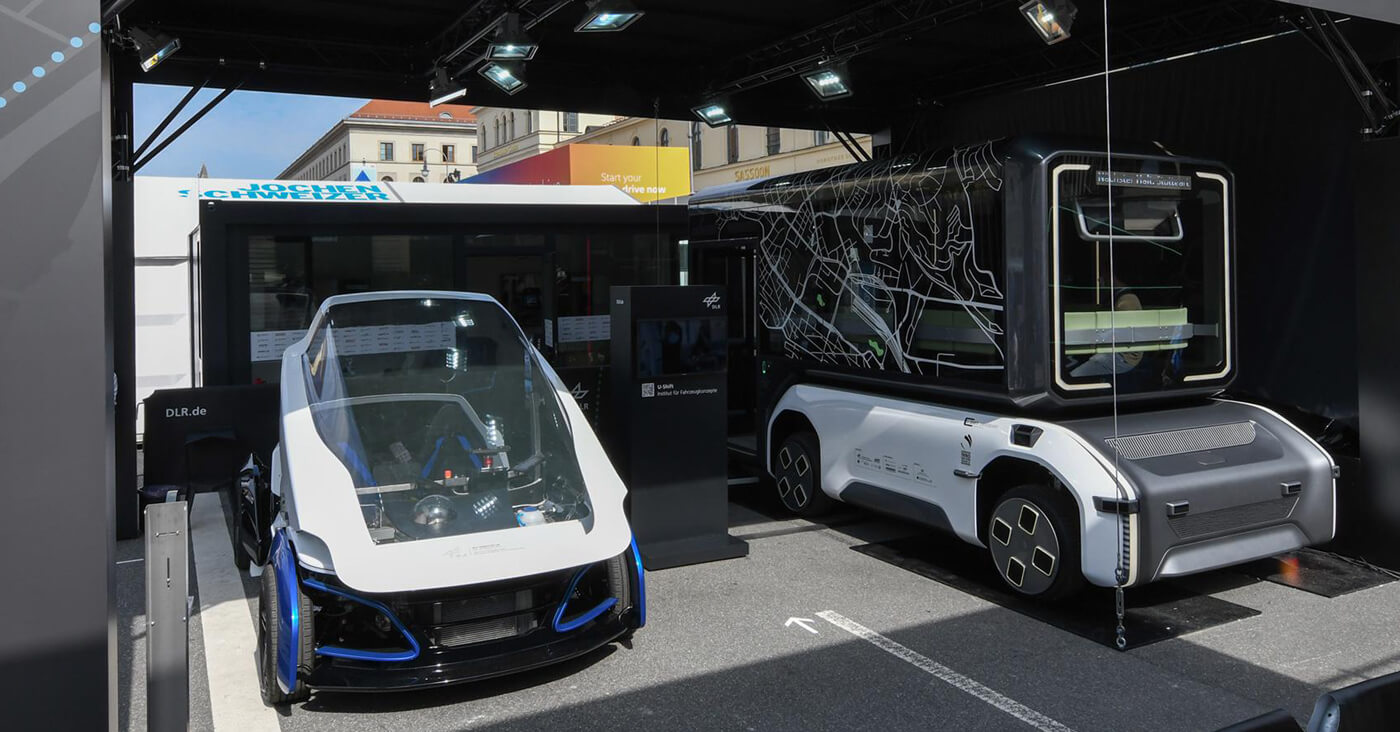
U-Shift vehicle concept – on-the-road modularisation
DLR will also be presenting the first drivable prototype of its U-Shift concept at IAA Mobility 2021. Its potential applications range from on-demand shuttles to flexible parcel distribution centres and mobile shops. It combines two components. The U-shaped drive unit, known as the driveboard, contains all the technical components and systems. It is designed to be autonomous, electrically powered, quiet while driving and able to operate around the clock to ensure maximum cost-effectiveness. The first driveboard is currently remote controlled and is being automated within the current project. It is combined with capsule-shaped structures for transporting people and goods. There are almost no limits to the potential uses of this vehicle.
The first U-Shift prototype provides DLR researchers the opportunity to gain valuable experience with this vehicle concept and its contribution to more sustainable mobility. Discussions with the general public are also taking place alongside the technical aspects of the vehicle's development. The focus of these is on determining use cases and how people envisage the U-Shift vehicle concept could be used in the future.
Lower Saxony Test Field – research infrastructure for automated driving
DLR's Lower Saxony Test Field constitutes unique research infrastructure. It can be used to develop and test technologies for automated and networked driving. Potential applications range from simulations to test driving prototypes on its approximately 280 kilometres of road. It includes sections on motorways, federal and country roads and routes in Braunschweig city centre. The test field is also available for use by partners in industry and research.
Its unique selling point is its extensive and high-precision communication and sensing technology, which consists of camera and sensor systems that record vehicle positions, driving behaviour and traffic flow. Large amounts of data from different sources can be fed into the system and combined, such as those from vehicle communication systems (V2X) and traffic management centres.
DLR teams are currently developing a tool chain for simulation-based testing that involves highly automated vehicles mastering different traffic situations in a simulation. The test field makes it possible to compare simulation with reality, and thus validate simulations. A 'digital road twin' is also in the works.
DLR MovingLab – measuring mobility the easy way
Up-to-date, reliable data are incredibly valuable for the field of mobility research. Only by looking at such data is it possible to make statements about the mobility behaviour of individuals and groups. These data form the basis of scientific traffic models and forecasts and are beneficial to transport service providers.
With the MovingLab. DLR has developed a special survey and analysis method that opens up new possibilities. It uses something that most people always have with them – mobile devices such as smartphones. The position and motion sensors built into a smartphone allow the position of a person to be determined several times per minute. The MovingLab creates acceleration profiles by looking at how this position changes. This indicates the use of a specific means of transport – whether you are travelling by car, tram or on foot, for instance. The system automatically records all routes, the means of transport and transfer and stopping points. Surveys can also be carried out using the MovingLab app for purposes such as recording socio-demographic characteristics, general use of means of transport, attitudes or specific information on individual routes.
DLR experts are well represented in the IAA Mobility 2021 conference programme, with keynote speakers, presentations, panel discussions and talks on subjects including customer acceptance as the key to accelerating the expansion of the electromobility market.
